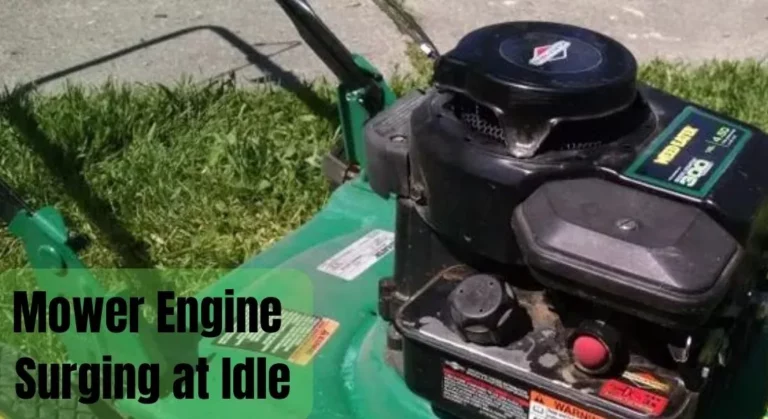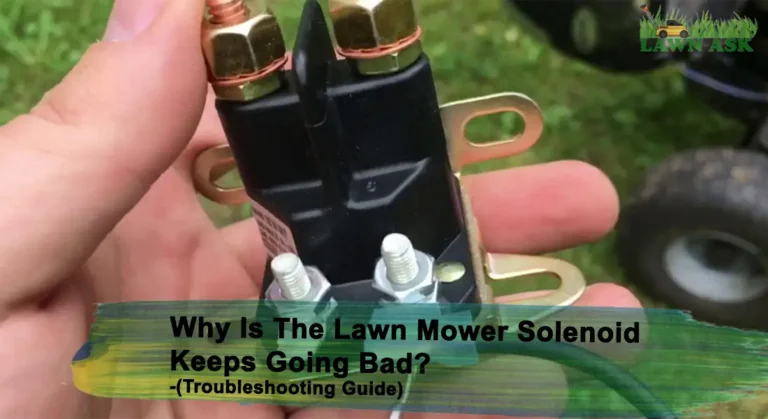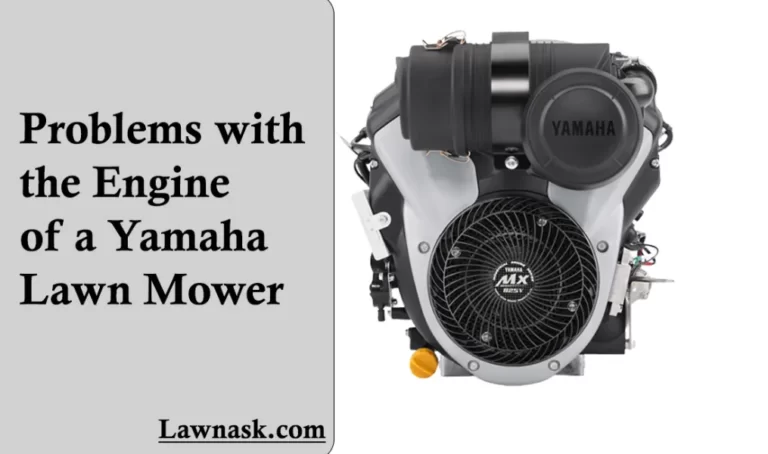Craftsman Lawn Mower Won’t Start? Here Are the Solutions!
Picture this – it’s a sunny weekend morning, and you’re eager to tackle some wild grass on the yard. You stroll confidently towards your trusty Craftsman, only to be met with silence.
Why would the Craftsman lawn mower won’t start? Maybe this is why:
- Sudden Stops and Not Starting
- Sticking Carburetor
- Ripping Drive Link and Belt
- Poor Cutting Performance
- Leaking Oil
- Compression Issue
In this blog post, we’ll unravel the reasons why your Craftsman lawnmower’s starting issues with some effective fixes.
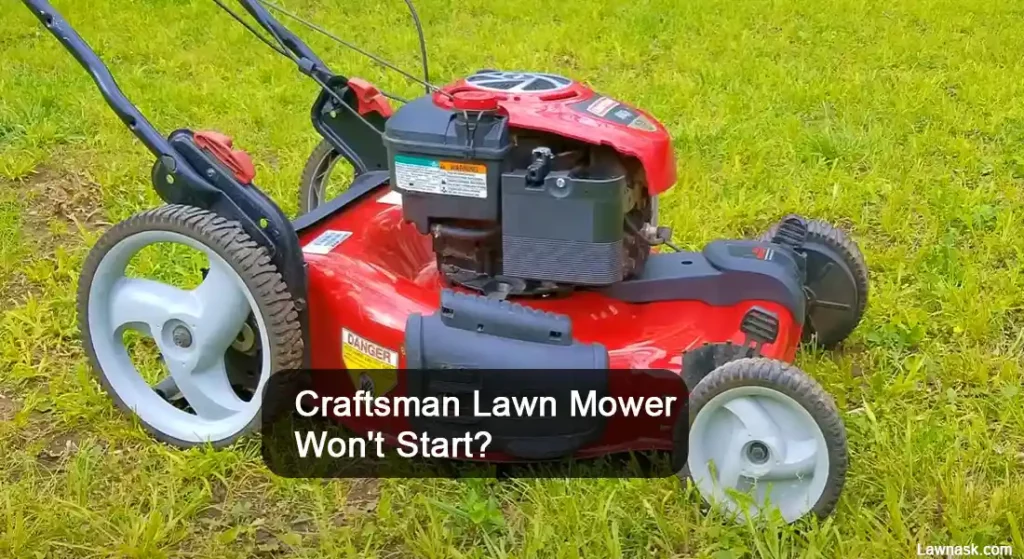
Common Causes Why the Craftsman Lawn Mower Won’t Start and Fixes
Here are some common reasons for the Craftsman Lawn Mower not starting and the fixes:
1. Sudden Stops and Not Starting
Many people complain that even with fresh gas, a new fuel line, a carburetor, and a new spark plug, the mower doesn’t start. It may also stop mid-mow.
The mower might work with a spray of starting fluid. But it will not start without starting fluid.
Spraying starter fluid is a bad approach because the engine needs the correct air-fuel ratio to run. By spraying the A/F ratio becomes unknown. If you must put something in there try a thimble of gasoline and let the vacuum of the piston draw in the amount of air-fuel mixture it needs for combustion.
Check for fuel in the tank and the fuel pump to carb. Check for wire on the bottom of the carb. If you leave fuel in carb between mowing seasons (Winter storage) Ethanol breaks down quickly and can gum up the anti-run on the solenoid needle.
It sometimes sinks in the close position (power off). When the ignition on the wire is hot and the solenoid keeps the needle in the ‘up’ position. Therefore, the engine will run.
A sticking needle means that the engine is starved for fuel. Drop the bowl on the carb and clean the needle valve with WD40. That will dissolve the deposits. To avoid this from happening again, make sure to use a stabilizer.
Related Post: Craftsman Riding Mower Won’t Start (6 Causes & Fixes)
2. Sticking Carburetor

The lawnmower starting and dying in 10 seconds is a sign of a sticking carburetor. This happens especially when you haven’t fully emptied the fuel tank and carburetor before winter storage
When tilting the carburetor to pour out the oil junk, the carb bowl can shift, clogging the main jet.
Try taping the bowl with a hammer and hopefully, that will jar the butterfly valve loose. Use Seafoam carb cleaner. If that does not work you need to take out the carb and do a thorough cleaning.
The bowl nut is the main jet on the carb. It has one hole down the center and one across the bottom. Clean these holes as well as the bowl. Be careful when reinstalling the bowl gasket so it doesn’t get destroyed.
3. Ripping Drive Link and Belt
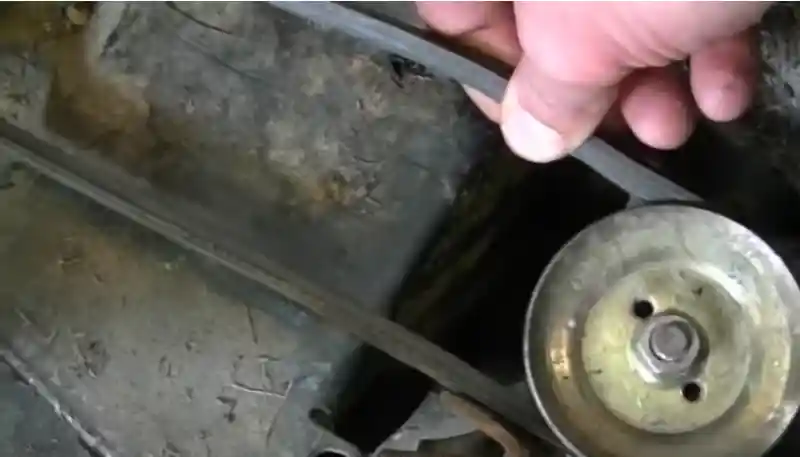
The drive link connects the drive belt to the engine’s pulley system. This makes the blade rotate and cut grass effectively.
The deck lift rod and the deck engage cable might snap. The reputation of some Craftsman is bad because of these snapping drive links and belts. The V-belts tend to snap after every use.
Moreover, the welds on the discharge chute break within 3-4 years so. Those might shoot back and cause injury.
Here’s how to fix it:
- Check the pulleys to see if they have any sharp edges on them, assuming they’re pressed steel type.
- Make sure your idler/tensioner is in line with the rest of the pulleys.
- Also, check the line of travel, the belt could be rubbing somewhere.
- Check the shafts also and make sure they’re not wobbling.
- When replacing, get some good belt guide bars or little belt guide plates.
Most owners would jokingly suggest you get rid of the ‘Crapsman’.
4. Poor Built
The Craftsman cannot cut a full swath without leaving a trail of green lumps, even when using the side discharge. Trying to mulch with it is a complete waste of time.
The wheel adjustments are very poorly engineered. It is very difficult to adjust the cutting height.
The deck is flimsy. The front wheels break off within 2-3 years of use. One has to get large washers to strengthen the wheel assemblies. This, however, is only a temporary fix.
Getting rid of the mower would be your permanent solution. Better than using essentially a useless mower.
5. Leaking Oil
The lower crankshaft seal leaks. The mower constantly leaks oil and has to be refilled every time after use. There is always a giant stain on your shed floor. It mainly leaks oil on the front of the mower deck.
The valve cover comes loose and leaks oil on the muffler. Just tighten it up and it works fine. It could be a breather hose or an engine seal as well.
Wash the mower and replace the head gasket. If that does not fix it, check the flywheel key. A broken one can cause a leak In some cases.
6. Compression Issue
The mower cranks about 1/2nd of a turn and that’s it. Even though the battery is fully charged, or even brand new, the mower will not work.
It is possible for your lawn tractor to not turn over because of a compression issue. Pull the plugs out and see if the engine spins smoothly and freely.
This happens quite a bit on small engines and is often misdiagnosed as a bad battery/starter. An incorrect valve adjustment or sticking compression release causes too much compression in the engine. This blocks the starter from turning the engine over.
Related Post: Reasons Craftsman Riding Mower Deck Belt Keeps Coming Off
Cost of Fixing a Craftsman Lawn Mower That Won’t Start
Repairing or replacing clogged fuel lines, cleaning or rebuilding the carburetor, or dealing with faulty fuel pumps can cost between $50 and $150. This includes labor and parts.
Additionally, replacing spark plugs, ignition coils, or ignition switches typically costs between $20 and $100. These replacements are needed for starter issues.
Replacing ignition switches typically costs between $20 and $100. If electrical problems are to blame, costs can vary greatly.
Replacing a battery can cost between $50 and $150. Whereas, addressing wiring or starter motor issues can cost between $100 and $200. This includes parts and labor.
Repairing engine compression issues is more complicated and may require costly repairs. Prices can range from $150 to $500 or more.
Craftsman Lawn Mower Won’t Start – FAQs
How often should I replace the spark plug in my Craftsman lawn mower?
The spark plug in your Craftsman lawn mower should be replaced once per mowing season or after approximately 25-100 hours of use.
How do I check the fuel level in my Craftsman lawn mower?
Locate the fuel tank that’s usually positioned near the rear of the machine. Visually inspect the mower (many Craftsman models have a transparent fuel tank for this purpose). Alternatively, some mowers have a fuel gauge or indicator that provides an accurate reading.
What safety interlock systems should I check if my Craftsman lawn mower won’t start?
Start by ensuring an engaged parking brake and a disengaged blade engagement lever. Additionally, verify that the operator is seated on the mower and that no objects are obstructing the discharge chute or the mower’s path.
How do I inspect the blades and drive system on my Craftsman lawn mower?
Turn the engine off, and disconnect the spark plug wire for safety. Carefully examine the blades for signs of damage, such as dullness, bends, or cracks.
Related Posts:
- Troubleshooting Electric PTO Clutch: A Complete Guide
- Troubleshooting Mower Starting Issues: Jumping Solenoid Fixes
- Troubleshooting Oil Leakage in Lawn Mower: Step-by-Step Solutions
- Troubleshooting Uneven Cutting in Your Lawn Mower: Effective Solutions
- Step-by-Step Guide: Adjusting Steering on Your Bad Boy Mower

